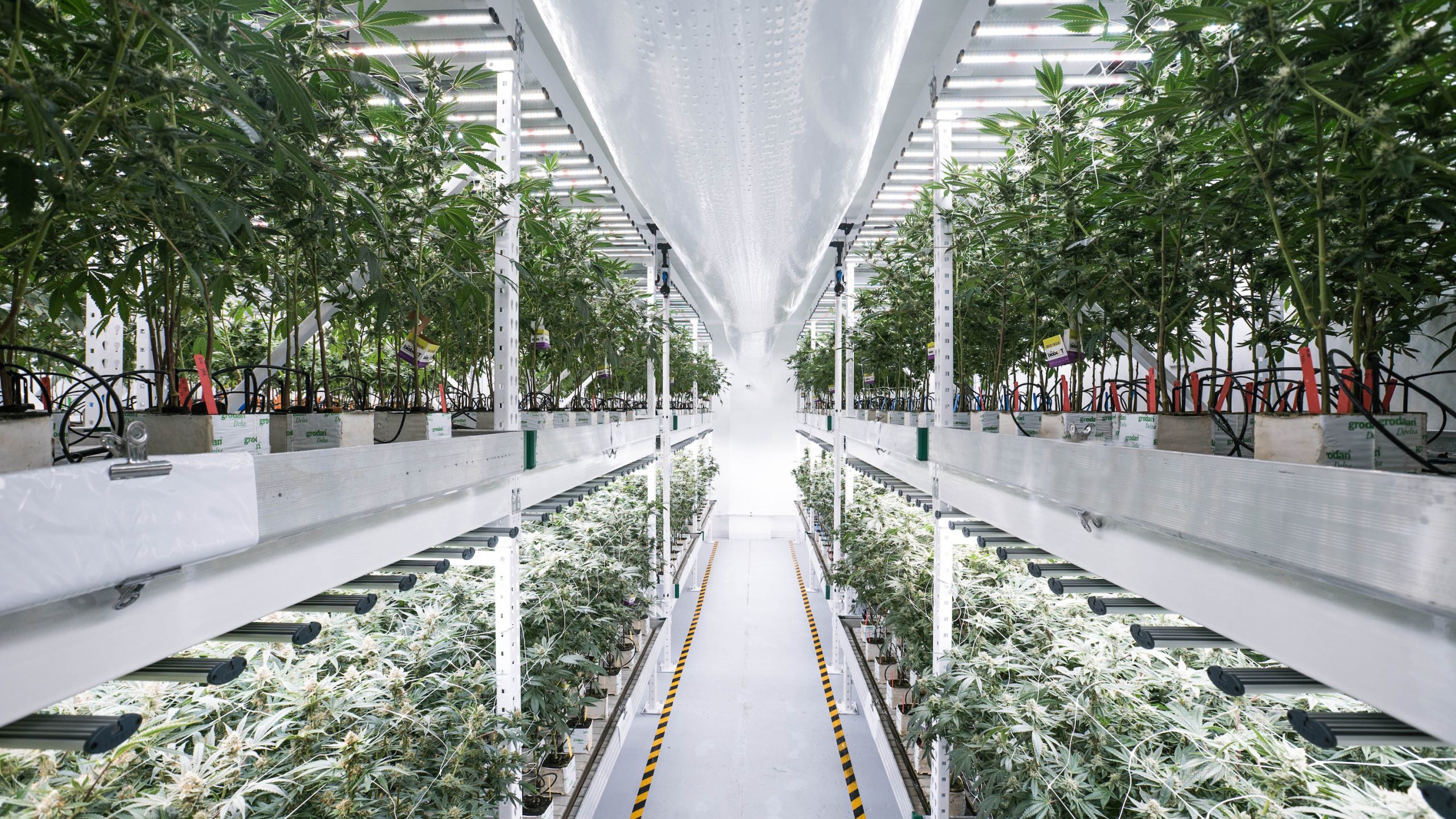by Emily Langner

Installing LED lighting is one way cannabis facility owners are meeting Massachusetts energy goals, while stacking plant canopies improves the efficiency of cultivation real estate assets. / Photo courtesy of the Resource Innovation Institute
In 2008, The Global Warming Solutions Act (GWSA) was signed into law, setting economy-wide greenhouse gas emission reduction goals for Massachusetts. Also in 2008, the Green Communities Act (GCA) was passed, which “promotes a dramatic expansion in energy efficiency and supports the development of renewable energy resources,” in an effort to meet those goals. The goal of reducing emission levels by 2050, set forth in the GWSA, is one of the guiding forces behind the Cannabis Control Commission’s (CCC) recent regulations, requiring owners of cannabis facilities to report their energy usage in order to renew their license to operate.
Beginning July 1, Massachusetts will begin requiring cannabis cultivators in the Commonwealth to report their energy, water and waste data to the state in order to renew their licenses after one year. The state is working with the Resource Innovation Institute (RII) and has specified the use of RII’s Cannabis PowerScore as a way to track and report that data.

The inputs and outputs of a cannabis facility and the regulatory entities which affect each / Rendering courtesy of Anderson Porter Design
The Resource Innovation Institute works to “establish industry standards, facilitate best practices and advocate for effective policies and incentives that accelerate resource efficiency.” Derek Smith, RII executive director, says, “Our goal is to help make compliance reporting easy for both cannabis cultivators as well as governments and utilities so that we can have one standardized aggregate set of data that everyone can rely on to make good decisions about policy, incentive programs, and cultivation best practices.”
For four years, the nonprofit organization has been collecting energy use data and developing those best practices for the industry. The state of Massachusetts’ Department of Energy Resources is funding a recent upgrade to the Cannabis PowerScore, and establishing it as the tool to help the industry stay on track with its energy goals.
Brian Anderson, founding partner at Anderson Porter Design, says that, as a high-energy consuming industry (with 60-70% of the cost to build a cannabis facility being mechanical and electrical), it’s important to continue to find ways to be more energy efficient. This includes things like installing LED lighting, seeking out non-coal fired sources of energy such as wind and solar energy, and working with the utility companies to tailor an incentive package to the specific goals, capabilities, and limitations of each facility.
Anderson says, when working with clients in this space, he really puts the biggest emphasis on “doing it right the first time.” This means installing energy efficient mechanical and electrical systems, setting up water reclamation systems, and working with the energy companies to receive all possible rebates for saving energy. He says it is crucial for cannabis owners to engage with an architect and engineer early in the process, and to be educated on the energy requirements specific to the state they’re operating in.
Smith and Anderson both emphasize that it is a team effort when it comes to establishing energy saving measures and setting up best practices for the industry. Events like the National Cannabis industry Association’s upcoming Northeast Cannabis Business Conference and the RII’s Indoor Agriculture Energy Solutions Conference are bringing together policy experts, government representatives, and firms like Anderson Porter, to move the industry forward and, Anderson says, “make sure that the industry can grow successfully.”
As a founder and chair of the NCIA’s Facilities Design Committee, Anderson’s mission is to help guide businesses to make good sound business decisions when it comes to energy and water use. Together, the NCIA and RII are working to support local governments, utilities, and designers who want to know how to serve their customers better and on an ongoing basis. By helping cannabis owners design with efficiency in mind, they can meet their state’s energy goals and lead by example for those that come after them, benefiting the environment and the communities where they operate.
Emily Langner is the staff writer and associate editor for High-Profile Monthly.












